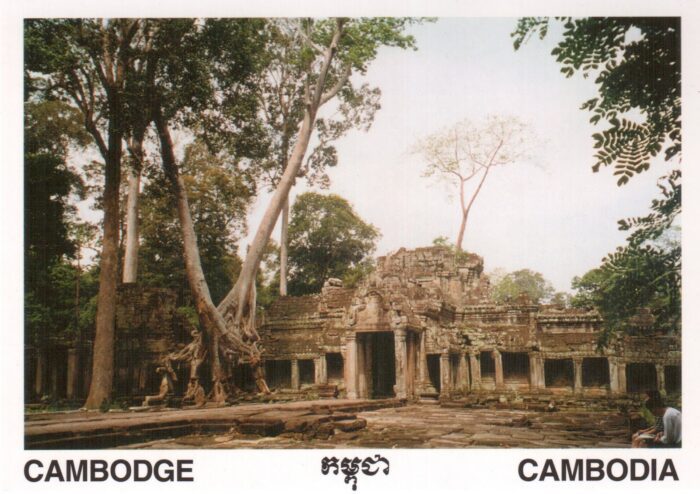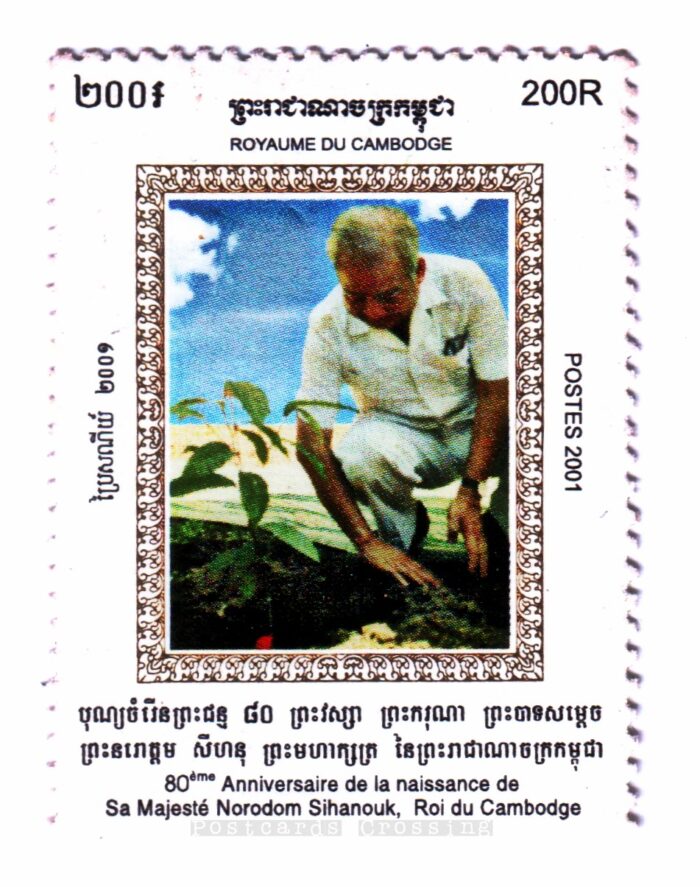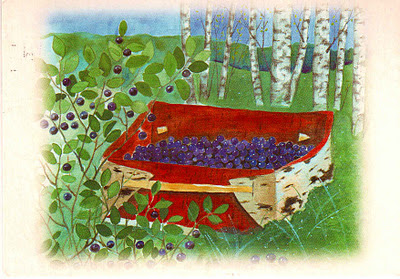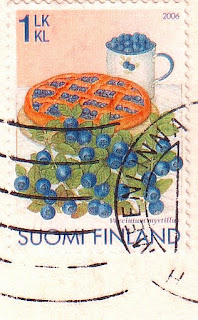This postcard is an old one in my album and it shows Preah Khan Temple (the back side), one of the captivating temples nestled within the sprawling Angkor Wat complex in Siem Reap, Cambodia. Unlike past hot summer visits, my Siem Reap adventure in July last year was in the middle of the monsoon’s refreshing embrace. My friends, seasoned Angkor explorers, swore by the rainy season’s magic, promised a magical transformation, and I was eager to see it for myself.
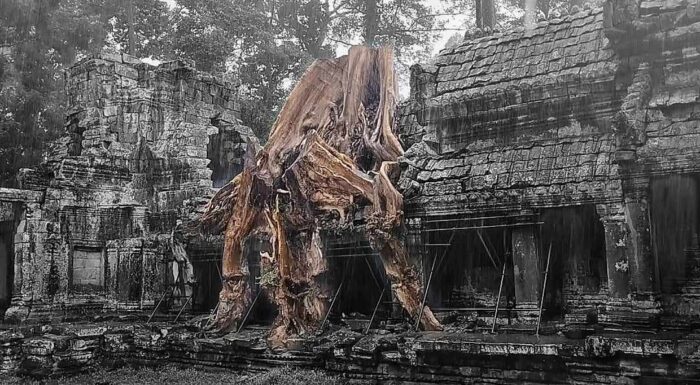
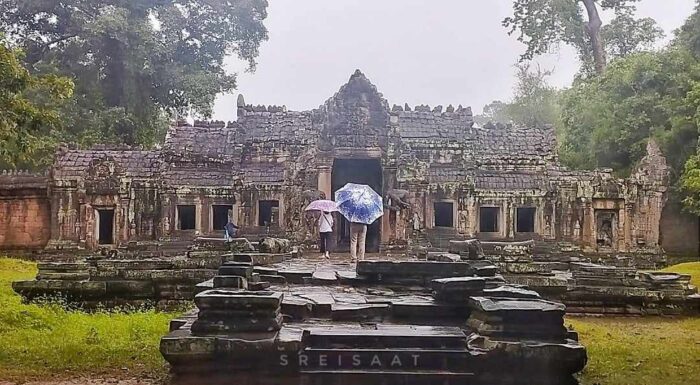
Preah Khan, translating to “sacred sword,” holds a unique charm despite its lesser fame compared to Angkor Wat or Bayon Temple. Built by King Jayavarman VII in the 12th century, it served a dual purpose: a temple city and a tribute to his father following a hard-fought victory. Here’s a walk through of the Preah Khan Temple, for those interested.
Leaving the hotel under clear skies, we breezed through the Angkor Archaeological Park checkpoints, armed with our resident (free) passes. Yet, as we neared Preah Khan’s eastern entrance, a downpour caught us by surprise. Undeterred, we hopped off the tuk-tuk and laughed at the absurdity of it all. We joined a mix of curious, umbrella-toting foreign and local visitors, to look at the intricate carvings adorning the causeway’s balustrades.
Crafted from ancient sandstone, these panels depict a timeless battle between good and evil – the seven-headed naga (serpent) carried by divine devas on one side, and the opposing asuras (demons) on the other. Sadly, weathering and looting have taken a toll, scattering fragments of these magnificent sculptures (heads, mostly) across museums worldwide.
Venturing into the rain-soaked forest, a sense of adventure surged through me. Imagine Lara Croft, but rain-soaked and determined – that was me, Zarah Croft, navigating a maze of ancient ruins. Our mission within Preah Khan’s main temple this time? To find a hidden altar, rumoured to hold a wish-granting image revered by many Thais, but unknown to most visitors, including ourselves until our Thai and Khmer friends told us about it.
Under the relentless rain, with only the temple’s partial shelter, we navigated corridors adorned with weathered stone carvings of mythical beings. Each sculpture, some vibrant with rain-washed hues, others cloaked in moss or lichens, bore the tales of the past. Each corner revealed mythical and spiritual beings, their details begging for examination.
Rainwater pooled on the floor, splashing with every step we took. It was like stepping back in time, a real-life adventure. Finally, after diligent exploration, and soaking wet, we stumbled upon the inconspicuous altar and its sacred image. Lighting candles and incense, we offered a silent prayer. My feet, submerged in the cool water, felt strangely connected to the past. In that moment, I could almost picture the kings and queens who once walked these very halls, their hopes and dreams carried on the wind. I could almost hear the whispers of ancient prayers echoing through the halls. My imagination soared as we continued to explore the other chambers in the temple – what if a devata, a heavenly being, or an apsara, a celestial dancer, materialized from the shadows? I’m fine with either, as long as it’s not an asura blocking my way! Lol.
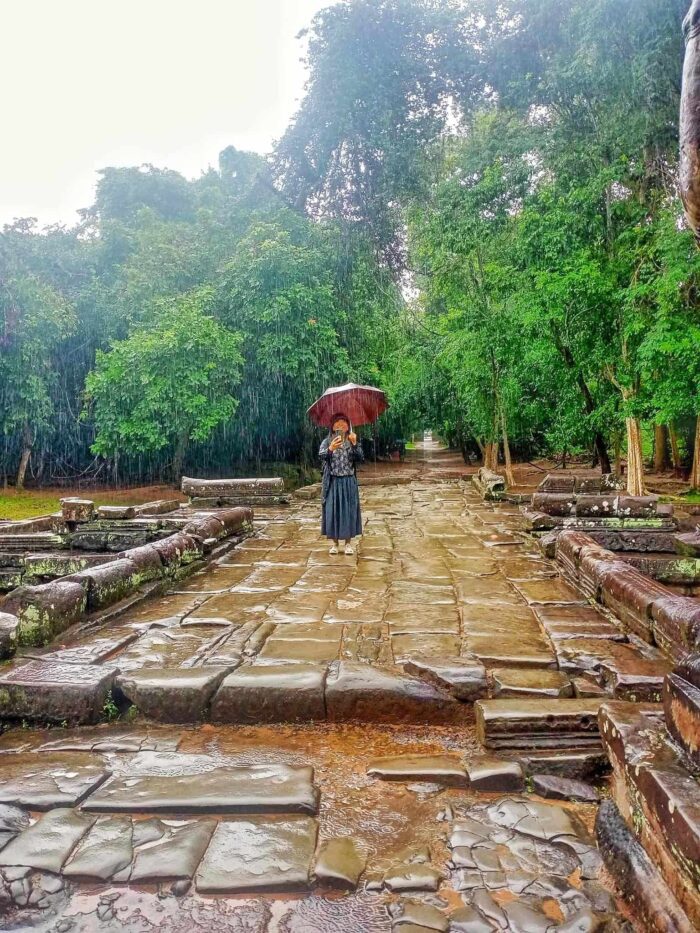
The persistent rain, far from dampening our spirits, added a layer of unexpected wonder. It evoked a childhood nostalgia for the Philippine monsoon season. Memories of playful splashes in puddles with classmates and cousins, a carefree spirit untamed by the thought of scoldings from our mothers and elders. A time of pure, uninhibited joy.
Preah Khan’s magnificence speaks for itself, but under the cloak of rain, it revealed a whole new layer of magic I have not seen and experienced before.
